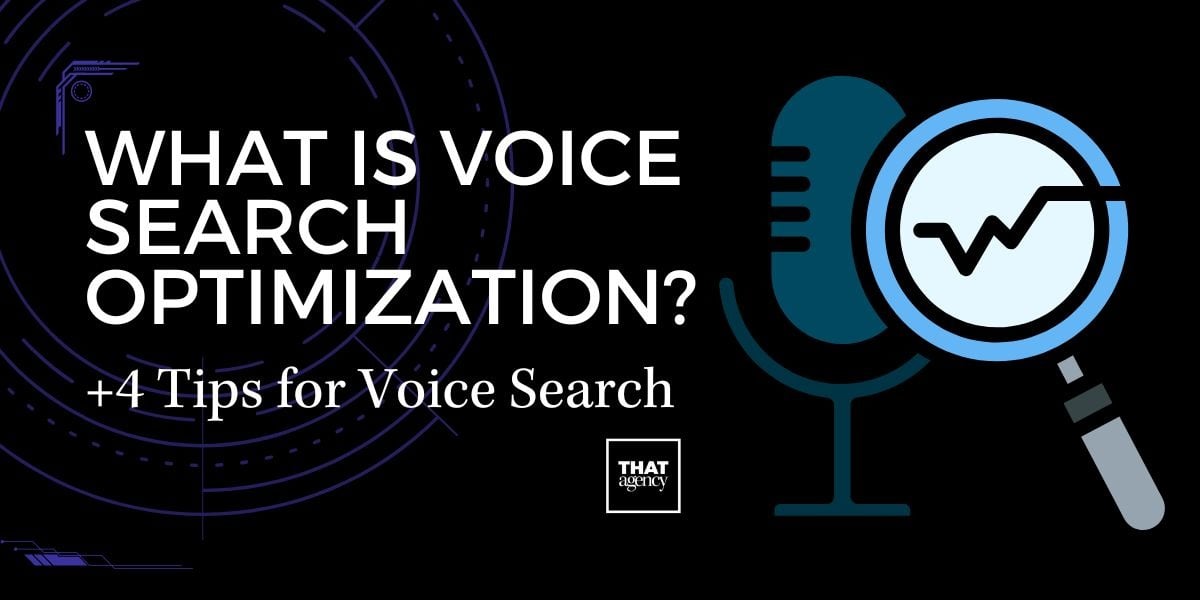If you’re a dentist looking to grow your practice in 2025, one of the best things you can do is show up where your patients are looking, online. That’s where SEO for dentist practices comes in. SEO (short for search engine optimization) helps your website show up on Google when people search for things like “dentist near me” or “best dentist in [your city].”
In this blog, we’ll walk you through what SEO means for dentists today, why it matters more than ever, and how smart dental marketing ideas can help you attract more patients this year.
SEO for dentists means using tools and strategies to help your dental website rank higher in search engines like Google. When someone in your area searches for a dentist, your site should be one of the first results they see.
Good dental SEO focuses on:
The goal? Get more people to visit your website, call your office, and book appointments.
Let’s face it, when people need a dentist in 2025, they don’t flip through a phone book. They grab their phone, open Google, and search for things like “dentist near me” or “best family dentist in [city].” If your practice doesn’t show up on that first page, they’ll probably never see your name, and that means you’re missing out on new patients.
That’s why SEO for dentist offices is more important now than ever.
SEO stands for Search Engine Optimization. It’s how you help your website show up when people search online. A strong SEO strategy makes sure your site appears in local searches, loads quickly, works on mobile devices, and answers the questions people are asking.
Here’s why that matters in 2025:
Most people won’t call a dentist they’ve never heard of. Instead, they’ll search online, read reviews, check out your website, and maybe even scroll through your social media. If your website doesn’t appear on that first page of search results, most people won’t even know you exist.
What if I rely on referrals or word of mouth? Referrals are great, but even referred patients are likely to Google you before calling. That’s why having a strong online presence is still essential, even if most of your patients come from personal recommendations.
The higher your dental website ranks on Google, the more people will see it. And the more people see it, the more likely they are to call, book an appointment, or schedule a consultation. SEO puts your practice in front of people who are already looking for a dentist.
It’s not about advertising to strangers, it’s about showing up for people who need you.
In 2025, Google cares about more than just keywords. It looks for content that’s useful, trustworthy, and written with expertise. That means your website should:
For example, if someone searches “what to do after a root canal,” and your blog post answers that question clearly, Google is more likely to show your page, and that person is more likely to trust your practice.
When someone searches for “dentist near me” or “kids’ dentist in Boca Raton,” Google shows local results, usually with a map and a few listings at the top. This is called the Local Pack, and it’s a major traffic driver for dentists.
With good SEO, your practice can appear in those local results, leading to real calls, real visits, and real patients.
Isn’t that just about having good reviews? Reviews are part of it, but Google also looks at things like your Google Business Profile, the content on your website, how often your information is updated, and whether your website is optimized for mobile.
If you’re not using SEO, your competitors probably are. They’re showing up in search results, getting more clicks, and attracting patients that could have been yours.
Think of SEO like digital real estate. If you don’t claim your spot, someone else will.
When people find your practice easily, see that your website is clear and helpful, and read positive reviews, they start to trust you before they even call. That first impression matters, and SEO plays a huge part in creating it.
A clean website, informative blog, and accurate business listings all tell patients: “This is a professional, reliable place.”
SEO isn’t just a trend, it’s a long-term tool that helps your dental practice stay visible, competitive, and trusted. In 2025, SEO for dentist practices is one of the most effective ways to bring in new patients and grow your business. Whether you’re just starting out or have been in business for years, improving your online presence will make a real difference.
Think of your website as your practice’s digital front door. It’s often the first impression potential patients have of your office. Just like you’d want a clean, welcoming waiting room, your website should be easy to use, informative, and show up when people search for a dentist online. That’s where SEO for dentist websites really makes a difference.
Here’s how to improve your dental website so it brings in more patients, and helps them feel confident choosing your practice.
When someone needs a dentist, they usually search for one nearby. That’s why local keywords are so important. Local keywords are search terms that include a location, like your city, neighborhood, or even nearby landmarks.
Examples of local dental keywords:
Where to use these keywords:
Do I need to use these exact phrases over and over? Not at all. Use them naturally. It’s okay to change up the wording slightly or include variations, as long as the meaning is clear. Google is smart enough to understand similar phrases like “dental emergency in Jupiter” or “Palm Beach Invisalign specialist.”
Each page on your website needs a title tag and a meta description. These are the little pieces of text that show up in Google search results. When done right, they can help your website rank better, and encourage people to click.
What they look like in search results:
Title Tag: Affordable Dental Implants in Palm Beach – [Your Practice Name]
Meta Description: Looking for long-lasting, natural-looking dental implants in Palm Beach? Schedule a free consultation with our trusted dental team today.
Tips for writing good titles and descriptions:
Is this something I can do myself? If you manage your website, most platforms like WordPress, Wix, or Squarespace let you add these easily. If not, your web designer or marketing agency can help you set them up.
One of the easiest ways to improve your SEO is to answer the questions your patients are already asking. This helps your website show up in search results and makes people trust your practice more.
Common dental questions people search:
By creating pages or blog posts that clearly answer these questions, you’re giving Google (and your future patients) exactly what they’re looking for.
Why it works:
Content ideas you can try:
Do I need to write all this myself? Not necessarily. Many dentists partner with digital marketing agencies (like THAT Agency) to create content that’s both helpful and optimized for SEO. If you have ideas, even better, those insights can be turned into strong content that brings in more traffic.
Improving your dental website with SEO doesn’t have to be overwhelming. Start small: use local keywords, write helpful content, and add clear page titles and descriptions. Over time, these small steps add up to big results, more visibility, more trust, and more new patients finding your practice online.
You may have the best dental team and offer amazing care, but if people don’t know about your practice, it’s hard to grow. That’s why having a solid marketing plan is just as important as the services you provide. In 2025, dental marketing is all about being visible, helpful, and personal. Patients want to find information easily, connect with you online, and feel confident before they even step through your door.
Here are some dental marketing ideas that actually work, and how to use them to bring more people into your practice.
Your Google Business Profile is one of the first things patients see when they search for your practice, or even just search “dentist near me.” It’s that little box on the right side of Google search results that shows your name, address, hours, reviews, and more.
Keeping this profile updated is an easy but powerful way to bring in more local traffic.
Make sure your profile includes:
Do I need to post on Google regularly? Yes! Posting weekly updates (like new blog links, seasonal specials, or reminders) shows Google that you’re active and helps improve your local ranking.
Why it matters: An updated Google profile helps people:
Adding helpful blog posts to your website is a great way to show up in Google search results and keep your site fresh. Plus, it helps patients see you as a trustworthy source of dental information.
Great blog topics include:
Do I have to write the blogs myself? Not at all. Many dental practices work with marketing agencies like THAT Agency to write blogs that are informative, well-written, and optimized for SEO.
Why it works: When your blog posts answer real questions, people are more likely to find your site when they search for those answers. The more useful your content, the more Google rewards you by showing your website to more users.
Videos are one of the most powerful ways to connect with potential patients online. They don’t have to be fancy or high-budget, just helpful and human.
Easy video ideas include:
Where do I post the videos? You can upload them to YouTube, embed them on your website, and share them on platforms like Facebook, Instagram, or TikTok.
Why it works: Videos build trust. Seeing your face and hearing your voice helps people feel more comfortable, especially if they’re nervous about going to the dentist.
While SEO takes time to build up, online ads can get your practice in front of potential patients quickly. If you’re running a special offer or want to promote a high-demand service, ads are a smart move.
Platforms to consider:
Example ad ideas:
Are ads expensive? You can set your own budget. Even $200–$500 a month can make a difference when ads are well-targeted and paired with a strong landing page.
Email might sound old-school, but it still works, especially when it’s done right. Sending regular emails helps you stay connected with current patients, build loyalty, and encourage repeat visits.
What you can include in your emails:
How often should you send them? Once a month is a good start. You don’t want to flood inboxes, but regular check-ins keep your name top-of-mind.
What’s the best tool for sending emails? Platforms like Mailchimp, Constant Contact, or even your practice management software often include easy-to-use email features.
A backlink is when another website links to yours. The more trustworthy sites that link to your dental practice, the more Google sees your site as reliable.
You can get backlinks by:
These links tell search engines that your website is helpful and trustworthy.
SEO isn’t just about what people see, it’s also about how your site runs. Here are a few things to check:
So you’ve started improving your website and working on your SEO—but how do you know if it’s actually helping your dental practice grow? The good news is, you don’t have to guess. There are free tools available that give you real, clear data about how your SEO is performing.
Whether you're working with an agency or handling it yourself, checking your progress regularly is key to making smart marketing decisions.
Google Analytics 4 is a free tool from Google that shows how many people are visiting your website, where they’re coming from, and what they’re doing once they get there.
With GA4, you can find out:
What if I don’t know how to use Google Analytics? It can look a little overwhelming at first, but there are beginner-friendly tutorials on YouTube and Google’s own help pages. Or, you can have your marketing team walk you through the basics.
While Google Analytics shows what visitors do on your website, Google Search Console shows how people are finding your site in the first place. It’s a must-have tool for tracking your SEO.
With Search Console, you can:
Example: You might find out that “emergency dentist in [your city]” is bringing in a lot of visitors. That’s a great sign that your local SEO is working.
If you want to focus specifically on your rankings in your town, city, or neighborhood, tools like BrightLocal, Moz Local, or Whitespark are great options. These tools help track your local keyword rankings, monitor your online listings, and even manage your online reviews.
Why local tools matter: As a dentist, your patients are local. You want to show up when someone nearby searches for things like “Invisalign near me” or “kids’ dentist in Boca Raton.” These tools help you measure how well you’re doing in your specific area—not just nationwide.
You’ll know your SEO is working when you start seeing:
How long does it take to see results? SEO takes time. You might start seeing small improvements in a few weeks, but major changes usually take 3–6 months. Be patient—and consistent. The results are worth it.
Even if you’re doing your best to follow SEO advice, some small mistakes can hold you back. Here are a few common ones dentists make—and how to fix them.
In 2025, most people are using their phones to search for everything—including a new dentist. If your website doesn’t look good or work well on a phone, you could lose out on potential patients.
How to fix it:
Your Google Business Profile (also called your GBP) is one of the first things patients see. If your office hours, phone number, or services are outdated, it can lead to confusion—or lost appointments.
How to fix it: Log in regularly to check your info, upload new photos, and respond to patient reviews.
Blogging is great, but if your posts don’t include the right keywords, they won’t help much with SEO. For example, a blog titled “How to Care for Your Gums” should also include phrases like “gum disease prevention” or “oral hygiene tips from your dentist in [city].”
How to fix it: Do keyword research or ask your marketing agency to provide a list of search terms. Use these naturally in your titles, headers, and content.
An old website might still “work,” but if it’s slow or hard to navigate, visitors won’t stick around—and Google will notice. Page speed, security, and design all matter for SEO now more than ever.
How to fix it:
Online reviews aren’t just for reputation—they also help your SEO. Google looks at the number and quality of your reviews when deciding where to rank your practice in search results.
How to fix it:
Tracking your SEO progress is one of the smartest things you can do to grow your dental practice. When you know what’s working (and what’s not), you can make better decisions and keep improving. Use tools like Google Analytics, Search Console, and local SEO platforms to stay on top of your results.
If you want to bring in more patients this year, SEO for dentist practices needs to be part of your marketing strategy. When done right, SEO helps your website rank higher, attract more clicks, and get more phone calls. Combine that with smart dental marketing ideas like blogging, videos, and local ads, and you’ll be on your way to growing a thriving practice.
Need help getting started? At THAT Agency, we help dentists improve their online presence, attract more patients, and grow their businesses with smart SEO and marketing strategies. Contact us today to learn how we can help your practice succeed in 2025 and beyond.
Tags: SEO, 2025 Marketing Trends, seo audit, Local SEO Experts

What are Zero Click Searches and How Do They Impact Your Business?

What is Voice Search Optimization? +4 Tips for Voice Search

Leveraging Predictive Analytics Marketing for Smarter Decisions

Consumer Behavior Trends 2026 Every Business Must Factor Into Their Marketing Plan
.jpg)
AI Image Generation for Marketers: What’s Possible and What to Avoid
700 S. Rosemary Ave.
Suite 204-707
West Palm Beach, FL 33401
P: 561.832.6262
F: 561.832.7707

